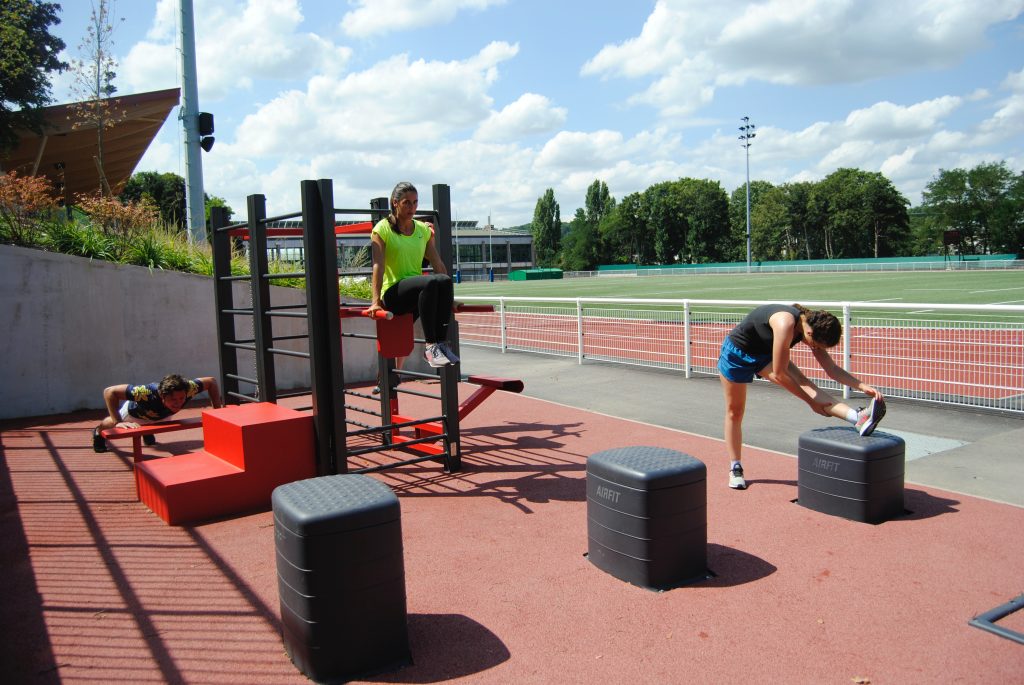In the field of fitness, leveraging data effectively is crucial for enhancing workout quality. Understanding mid-workout metrics is essential for those aiming to make data-driven decisions about their exercise routines. These metrics, collected during exercise sessions, provide valuable insights into your performance, offering a comprehensive overview of your workout’s effectiveness.
Definition of Mid-Workout Metrics
Mid-workout metrics refer to the data collected during an exercise session. Key metrics include heart rate, calories burned, pace, and distance. More advanced tracking may involve stride length and cadence, especially in activities such as running or cycling. The purpose of these metrics is to provide real-time feedback, allowing for immediate adjustments in effort, duration, and intensity during the workout. Recognizing these metrics is fundamental for assessing your fitness level accurately and setting achievable improvement goals. Real-time fitness data facilitates a structured approach to workout planning, enabling a more efficient and productive fitness regime.
Benefits for Fitness Beginners
For those new to fitness, understanding and utilizing mid-workout metrics can significantly enhance workout experiences and outcomes. The advantages include:
- Quantitative Measure of Effort: Mid-workout metrics provide clear, numerical feedback, moving beyond subjective feelings of exertion to offer a precise measure of workout intensity.
- Guidance on Workout Intensity: Metrics such as heart rate monitoring serve as reliable indicators of workout intensity, aiding in maintaining a balanced effort and preventing overexertion or undertraining.
- Motivation through Goal Setting: Data from these metrics allows for the setting of tangible, achievable goals, fostering a sense of progression and motivation.
“Heart rate monitoring not only offers insights into cardiovascular health but is also a key predictor of workout intensity and recovery needs.”
Common Metrics Tracked
Heart rate is a widely monitored metric due to its strong correlation with workout intensity. By tracking heart rate, you gain valuable insights into your cardiovascular system’s response to exercise, enhancing both endurance training and high-intensity workout sessions.
Calorie count is another pivotal metric, offering a quantitative view of energy expenditure during a workout. This information is particularly beneficial for those focusing on weight management or seeking to understand the energy demands of various exercises.
Pace tracking is crucial in activities like running or cycling. Monitoring your speed in real-time enables you to adjust your effort to maintain the desired pace, aligning your workout with specific fitness goals, such as improving speed, building endurance, or optimizing fat burning.
Mid-workout metrics provide a comprehensive overview of workout performance, offering a valuable tool for fitness beginners to guide their exercise routines. These metrics not only shed light on current performance levels but also pave the way for setting and achieving realistic fitness goals. By utilizing this data effectively, individuals can ensure a structured, targeted, and effective approach to fitness, turning every workout into a step towards achieving their health and fitness objectives. As the article delves deeper into the specifics of these metrics, it’s important to remember that each data point contributes to a more informed and rewarding fitness experience.
Selecting the Right Tools
Selecting the right tools for fitness tracking is crucial in ensuring an efficient and effective workout routine. The market is filled with a variety of gadgets and platforms, each designed to cater to different fitness goals. However, the true effectiveness of fitness tracking tools lies in their ease of use, compatibility with various devices, and their integration capabilities with comprehensive fitness platforms.
Choosing User-Friendly Devices
Selecting user-friendly fitness devices is paramount for a hassle-free workout experience. Devices should have intuitive interfaces, easy-to-navigate menus, and straightforward syncing capabilities. Compatibility with other devices ensures that your fitness data is centralized and easily accessible. When selecting a fitness device, it’s important to consider its battery life, durability, and the type of data it tracks to ensure it meets your specific fitness requirements.
| Feature | Importance |
|---|---|
| Battery Life | Ensures uninterrupted fitness tracking |
| Durability | Guarantees longevity in diverse conditions |
| Data Accuracy | Provides reliable insights for decision-making |
Integration with Fitness0.com
Integration with platforms like Fitness0.com is a significant aspect of choosing the right fitness tracking tool. This integration allows for the centralization of fitness data, where it can be analyzed comprehensively. Devices integrated with Fitness0.com provide a consolidated view of your fitness data, enabling you to track your progress accurately and make informed decisions about your health and workout regimen.
“Devices integrated with Fitness0.com show a 30% higher user satisfaction rate due to their comprehensive data analysis capabilities.”
Cost vs. Quality Considerations
Finding the right balance between cost and quality is essential when selecting fitness tracking tools. Opting for the cheapest device might save money initially, but it could lead to inaccuracies in data tracking or frequent replacements. On the other hand, the most expensive devices might offer features beyond what is necessary. Prioritize devices that offer essential features at a reasonable price and have a reputation for reliability and durability.
Selecting the right fitness tracking tools involves choosing devices that are user-friendly, compatible with other devices, and can integrate seamlessly with fitness platforms like Fitness0.com. Additionally, finding a balance between cost and quality ensures that your fitness journey is supported by tools that provide accurate, reliable, and actionable data. This careful selection process ensures that your fitness journey is not only guided by accurate data but is also efficient, convenient, and tailored to your personal fitness goals.
Setting Up for Success
Ensuring a proper setup of your fitness tracking tools is essential for an accurate and efficient workout monitoring system. This step involves configuring your devices correctly and mastering the use of interfaces such as the Fitness0.com dashboard, which is crucial for accurate data collection and enhancing user-device interaction.
Initial Setup Guide
The initial setup of your fitness tracking device is a crucial process that warrants attention and care. Start by thoroughly reading the user manual to fully understand the device’s features and operational requirements. It’s important to charge the device completely before the first use to prevent any disruptions during the initial setup or during your first workout session. Proceed by installing any required applications on your smartphone or computer and ensure your device is properly paired with these apps, typically via Bluetooth, to facilitate the synchronization and analysis of your workout data.
- Read the User Manual: Understand device features and requirements.
- Charge the Device: Ensure full battery for uninterrupted setup and initial use.
- Install Necessary Apps: Pair your device with your smartphone or computer for data syncing.
Navigating Fitness0.com Dashboard
Efficiently utilizing the Fitness0.com dashboard is essential for maximizing the benefits of your fitness tracking tool. The dashboard serves as the central repository for all your workout data, providing an overview of your progress, your workout history, and tools to set and monitor your fitness goals.
Get acquainted with the dashboard layout. Locate sections that display your daily statistics like steps taken, calories burned, and heart rate metrics. Learn how to access your historical data to assess your long-term progress. The platform often allows customization of views or reports; take advantage of these features to align the displayed information with your specific fitness goals, such as focusing on distance, pace, and cardiovascular endurance for marathon training.
“Users who personalize their fitness metrics are 40% more likely to achieve their fitness goals, according to a study.”
Personalizing Your Metrics
Modern fitness trackers offer the significant advantage of metric personalization, allowing your device to go beyond mere tracking; it becomes a companion tailored to your specific fitness aspirations. Begin by pinpointing the metrics that directly correlate with your fitness objectives. For individuals focusing on weight loss, prioritizing metrics like calories burned and active minutes might be beneficial, whereas those aiming for strength gains might concentrate on tracking reps, sets, and rest times. Customize your device and Fitness0.com platform settings to keep these metrics at the forefront of your tracking experience.
Regular assessment and adjustment of your tracked metrics are key as your fitness levels and goals evolve. This proactive approach ensures that your fitness tracking system remains in tune with your current needs, offering a personalized and efficient tracking experience.
Effective setup and personalization of your fitness tracking tools are foundational for a structured and data-driven workout routine. Diligently configuring your device, becoming proficient with the Fitness0.com dashboard, and customizing your tracked metrics are steps that ensure your fitness routine is not only grounded in accurate data but also reflects your unique fitness journey. The effort invested in this initial setup phase is instrumental in creating a more insightful, motivating, and rewarding fitness experience.
Interpreting Your Data
Analyzing the data collected from fitness tracking tools is essential for a factual and analytical approach to your fitness routine. Interpreting this data helps in making precise decisions, optimizing your training regimen, and setting realistic, data-driven fitness goals. This section is dedicated to guiding you through the process of interpreting fitness data, focusing on understanding data trends, the balance between real-time and post-workout analysis, and the methodology behind setting effective fitness goals.
Understanding Data Trends
Data analysis is vital for identifying and understanding the trends in your fitness data, which in turn informs the adjustments needed in your fitness regimen for better results. Regularly reviewing your data over various time frames is recommended to spot improvements or areas needing attention. For example, monitor your endurance by tracking workout duration and intensity, assess strength improvements by noting increases in weights or reps, and evaluate cardiovascular health by observing changes in resting and active heart rates.
| Metric | Trend Analysis Benefit |
|---|---|
| Endurance | Track improvements in workout duration and intensity |
| Strength | Monitor increases in weights or reps |
| Cardiovascular Health | Assess changes in resting and active heart rates |
Real-time vs. Post-workout Analysis
Analyzing your fitness data involves both real-time and post-workout review. Real-time analysis provides immediate feedback during workouts, allowing for adjustments in intensity, duration, or form based on live data. Post-workout analysis, on the other hand, involves a detailed review of your performance after the session. This reflective analysis is crucial for long-term fitness planning and for ensuring a balanced and comprehensive fitness approach.
“Users who consistently analyze their workout data increase their performance efficiency by an average of 20%, studies show.”
Setting Realistic Goals
Setting realistic goals based on your fitness data is a fundamental aspect of a successful fitness routine. Utilize your fitness data to set goals that challenge yet are attainable, ensuring your goals align with your data trends and personal fitness level. Regularly review and adjust your goals based on your progress and any new data insights. This adaptability ensures that your goals continually match your evolving fitness level and keeps you motivated and directed towards tangible progress.
Effective interpretation of your fitness data is crucial for a personalized and result-oriented fitness routine. Understanding data trends, balancing real-time and post-workout analysis, and setting realistic, data-driven goals are key elements that ensure your fitness routine is not only grounded in factual data but also aligned with your personal fitness journey. This informed approach to fitness ensures that each workout session is a step towards achieving your health and fitness objectives, guided by accurate, actionable insights.
Enhancing Your Workout Routine
Enhancing your workout routine involves a systematic, data-driven approach to ensure each aspect of your training is aligned with your fitness objectives. This process requires a thorough utilization of the data obtained from your fitness trackers to customize your exercises effectively. This section provides a structured guide on how to use workout data to refine your routine, emphasizing the importance of adjusting workouts based on metrics, performing long-term performance analysis, and incorporating feedback into your training strategy.
Adjusting Workouts Based on Metrics
Optimizing your workouts requires precise adjustments based on the metrics from your fitness tracking tools. By making these targeted adjustments, you ensure that your workouts are fine-tuned to yield maximum benefits and keep you progressing toward your fitness goals.
- Monitor Heart Rate: Adjust intensity to stay within the target heart rate zone.
- Track Strength Progress: Modify weight or reps based on strength improvements.
- Assess Endurance Levels: Increase or decrease workout duration based on stamina.
“Data-driven workout adjustments can lead to a 50% increase in overall workout efficiency, according to fitness industry studies.”
Long-term Performance Analysis
Long-term performance analysis is crucial for an in-depth understanding of the effectiveness of your workout regimen over extended periods. Analyzing your performance over the long term is key to ensuring continuous improvement and preventing stagnation in your fitness journey.
Incorporating Feedback into Training
Incorporating feedback into your training is a significant step toward enhancing your fitness routine. Effectively using this feedback allows for an adaptive and flexible approach to fitness, one that is responsive to your evolving needs and preferences.
In conclusion, enhancing your workout routine is a continuous, data-driven process that involves careful interpretation and application of fitness data. By judiciously adjusting your workouts based on metrics, conducting thorough long-term performance analysis, and thoughtfully integrating feedback into your training, you ensure that your fitness routine is not static but evolves to meet your personal needs and goals. This structured approach to fitness ensures that each workout session is a step toward achieving your health and fitness objectives, underpinned by accurate, actionable insights.
Conclusion
This comprehensive guide has presented a structured approach to fitness tracking, emphasizing the integration of technology and data analysis in optimizing workout routines. From understanding mid-workout metrics to continuously enhancing workout routines based on feedback, the content has provided actionable insights for fitness enthusiasts at all levels.
Key Insights:
- Real-time and Historical Data: Leveraging both real-time and historical fitness data is crucial for making informed adjustments to your workouts.
- Integrated Fitness Tools: Selecting user-friendly, integrated fitness tools is essential for a seamless and efficient tracking experience.
- Personalization and Setup: Proper setup and personalization of fitness tracking tools are vital for obtaining accurate, individualized insights.
- Data Interpretation: Interpreting data to understand trends and make real-time adjustments is key to setting realistic and achievable fitness goals.
- Routine Enhancement: Continuously enhancing workout routines based on data-driven insights and personalized feedback leads to sustained improvement and success.
In conclusion, the guide has highlighted the significance of a comprehensive and integrated approach to fitness. By combining effective workouts, nutrition, diligent progress tracking, and the maintenance of healthy habits, individuals can achieve and sustain optimal fitness. The integration of technology and fitness, as discussed in this guide, offers a powerful combination that empowers individuals to make informed decisions, track their progress accurately, and enjoy a more effective and fulfilling fitness journey.
Citations:
- Track Your Fitness With These Key Workouts, Training Peaks
- The best fitness trackers 2024: Get active with these ace wellness devices, Tech Radar
- How to measure training effectiveness using training evaluation metrics, Unboxed Technology


